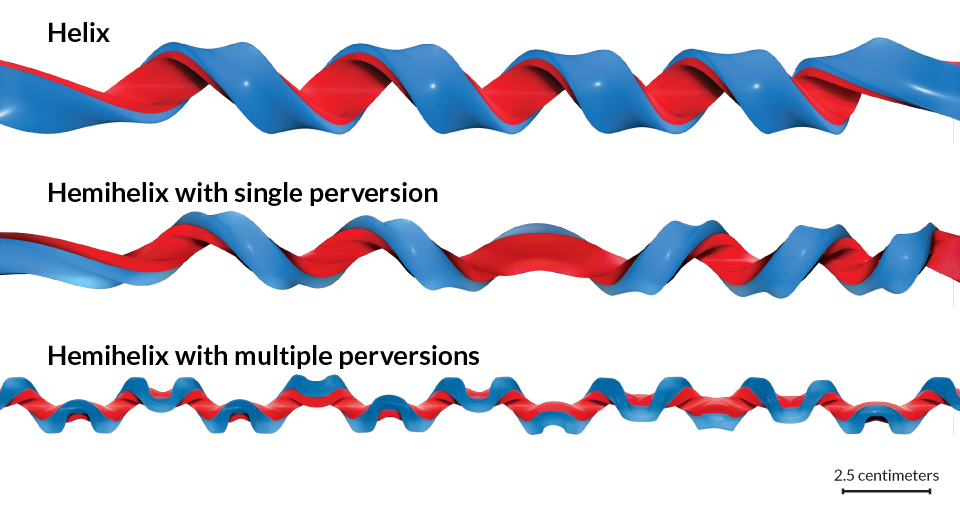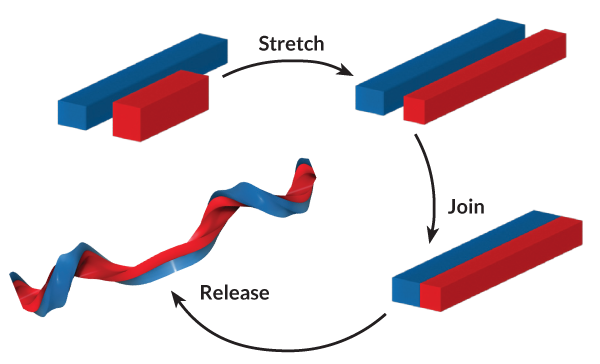A new twist on a twist

TWISTED Nature’s famous helix formation, which forms the shape of DNA, ram’s horns and seashells, can be tuned to make hemihelices — reverse windings of the original structure. Perversions are the changes in direction in a hemihelix.
Nature abounds with perfect helices. They show up in animal horns and seashells, in DNA and the young tendrils of plants. But helix formation can get complicated: In some cases, the direction of rotation can reverse as a helix grows. The resulting structure has been dubbed the hemihelix, and you may have made one yourself by untwisting part of a telephone cord so much that it flips and spirals in the other direction.
Katia Bertoldi, a professor of applied mechanics at Harvard University, and her colleagues wanted to see how hemihelices form on their own. So they stretched a strip of silicone rubber, glued it to a second, unstretched strip and let the pair go. The researchers reported April 23 in PLOS ONE that they could get a range of shapes to form by tuning the dimensions of the glued rubber pieces.
Strips that were much thicker than they were wide spiralled gently to form helices. Those with squarer cross sections relaxed themselves with a strong twist, forming hemihelices with one or many regularly spaced changes in direction.
“It’s sort of a competition between bending and twisting,” Bertoldi says. She and her colleagues are now experimenting with rectangular patches of rubber to see how this same stretch-and-release approach can be applied to make other three-dimensional shapes.
Spiral-bound
To create helical structures, one silicone strip (red) is stretched to match the length of a longer strip (blue). The pair is glued together and then released. Depending on the dimensions of the strands, a helix or hemihelix (one shown right) forms as the pair relaxes.

Shape matters
The number of changes in direction, or “perversions,” in a hemihelix depends on the cross section of the bonded strips (shown actual size below). Keeping width constant (blue = 3 mm, red = 1.89 mm), researchers decreased the thickness of the strips (shown as height) for more perversions.

Credit: Maluchi Enyi
Source: https://www.sciencenews.org/article/new-twist-twist



